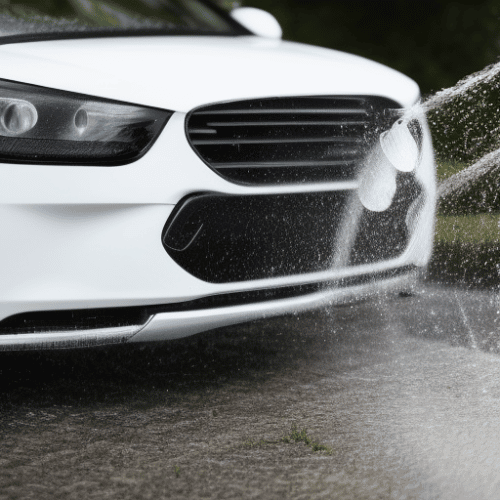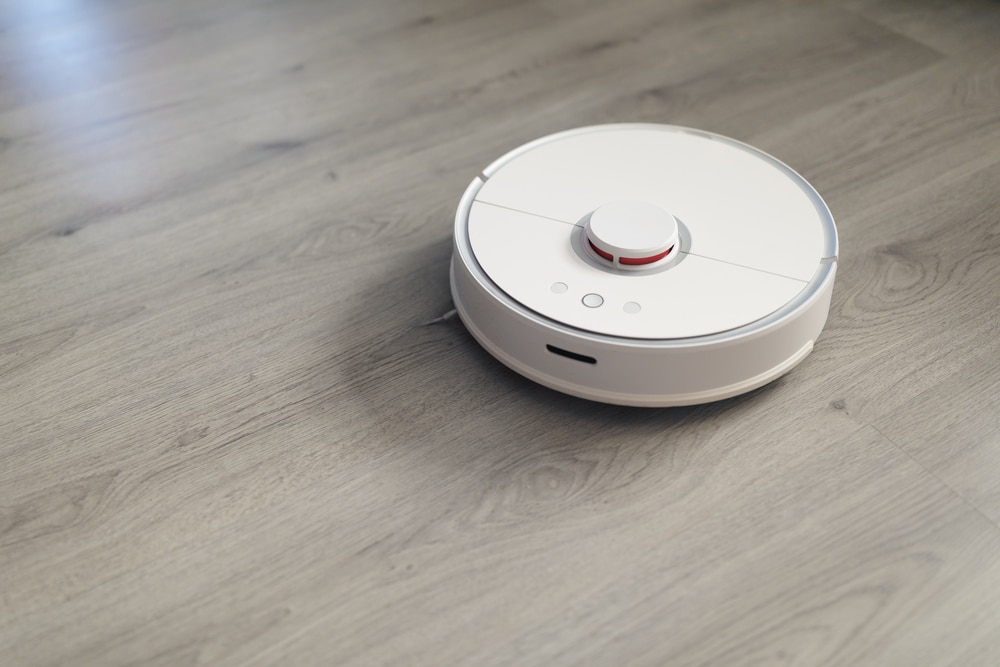Last Updated on
There are many things that can be cleaned using a pressure washer. They easily wash away dirt and grime on driveways, pathways, decks, and siding, but what about washing your car? Using a pressure washer to wash cars can actually make the process significantly easier, but it can also pose some potential risks if you don’t know how to do it correctly.
That’s why we compiled this article to help teach you how to wash a car with a pressure washer the right way. We also discuss some pro tips for pressure washers to help make car cleaning as easy as possible.
Getting Started: Pressure Washing Basics
Is It Safe to Wash a Car With a Pressure Washer?
Pressure washers can be used to clean a car, but only if you use the right settings, the right spray tips, and the right detergent. If you don’t, you run the risk of chipping your car’s paint. Considering how pressure washers are often used to remove graffiti, this should be no surprise.
In addition, scratches could develop if the initial dirt and grit on your car are ground into the paint instead of washed away. Lastly, pressure washing can make preexisting chips in the paintwork worse. If you have an older car with flaky paint, you may want to avoid pressure washing your car.
While a gas pressure washer can be used, an electric pressure washer is best for this type of job because they are not as powerful and therefore run a lower risk of damaging your car’s paint.
Before You Begin: Get Prepared
Before you turn on your pressure washer, you will want to gather a few supplies and set up your cleaning area to get yourself prepared.
We recommend you start by reading the user manual that came with your pressure washer. It will offer specific advice about settings for washing the surface of your car and will also tell you if your machine can be used with an extension cord; most can not.
What You’ll Need to Get Prepared:
- Close-toed shoes are a must. You want to protect your feet from the powerful stream to avoid injury.
- Park your car close to your garden hose and close to a power outlet if you are using an electric pressure washer. You also want to make sure you have space to move freely about the car without spraying fragile objects in the surrounding areas.
- Do not park over small gravel as it may cause the small stones to bounce up and hit your car, possibly chipping the paintwork.
- Choose your detergent. The soap should be compatible with the pressure washer and your car.
- Close all of the windows, sunroof, and doors on your car.
- You may also need a soft brush for scrubbing and a microfibre cloth for buffing and drying when done.
Pressure Washing Your Car: Step By Step Directions
Step 1: Choose the Settings and Nozzle
The first step to pressure washing your car involves preparing the machine. Set the pressure or PSI and the water flow or GPM. The manual for your specific pressure washer will have recommendations on which settings are appropriate for car washing.
Attach your garden hose to the machine and plug it into mains power. Then, insert the correct spray tip. Typically, either the white or green nozzles will work best for the initial part of the car cleaning process because they have a wider angle and a less concentrated spray pattern.
Step 2: Pre Wash Your Car

When your pressure washer is ready, begin your car wash by rinsing the entire vehicle from the top down. Aim the wand at the car using a downward angle between 25 and 45 degrees to help wash away the dirt without grinding it into the paint. This first pre-wash step will help to loosen caked-on mud and dirt.
Start spraying at a distance of one metre or more to prevent an excess amount of pressure on the car. You may be able to get a little bit closer to the wheels, and you may want to move further away from the windows, mirrors, and headlights.
Pro Tip: Do not pressure wash the engine or any parts under the hood as the water could damage electrical parts.
Step 3: Apply Detergent
After rinsing the surface of your vehicle, add detergent to the tank on the pressure washer, following the manual’s specific instructions. Also, take note of the soap’s instructions to make sure you don’t need to dilute the soap in a bucket first.
Remove the white or green spray nozzle and replace it with the black one. The black nozzle is specifically designed for applying detergent at a lower pressure. Coat the entire vehicle, including inside the wheel wells and the undercarriage. Apply the soap from the bottom up to prevent streaks from forming. Again, make sure you keep your distance. About 0.5 to 1 metre away should suffice, but you can get closer to the wheels.
If your pressure washer does not have a tank for detergent, you will need to apply it by hand with a washing mitt.
Step 4: Soak and Scrub
Leave the soap to sit for a few minutes. Check the soap’s specific instructions, but typically five minutes is enough time. While you wait, use a soft brush or wash mitt to gently scrub areas that may need some extra attention to get completely clean, like the bumper or wheel wells.
Make sure you do not let the soap dry on the car. You can respray it intermittently while you work if it is a particularly hot or windy day.
Step 5: Rinse Your Car
Next, remove the black nozzle and replace it with the white nozzle. Before you start spraying your vehicle again, aim the wand at the ground and spray for a few seconds to rinse away any soap left in the system.
Then, rinse away all of the dirt and debris that was lifted by the soap. Spray from the top down and maintain a downward angle while you work. Keep a distance of about 1 metre and pay special attention to crevices where soap tends to build up. Rinse thoroughly so no soap residue is left behind.
Pro Tip: Spray any stickers on your car straight on, not at an angle. Spraying them at an angle could start to peel away the edges.
Step 6: Dry Your Car
When you have thoroughly rinsed away all of the soap, your car wash is nearly complete. All that is left is to dry your car with a towel or microfibre cloth. If you wish to polish your car, now would be the time for that as well.
Step 7: Finishing Up
To finish the car washing process, unplug your pressure washer and detach it from the water supply. Let the hoses drain all of the water from the interior while the machine cools. After some time, store your pressure washer for the next use.
Car Pressure Washing FAQs
Why Should You Pressure Wash Your Car?
Using a pressure washer to clean your car makes the process faster and less labour-intensive. It also provides more pressure than your hose, which makes cleaning caked-on bugs, grease, and other mud that builds up on your car and your car’s tyres significantly easier. Pressure washing can minimize scratches caused by handwashing and help you avoid professional detailing services for your cars. Lastly, pressure washing is great for larger vehicles with hard-to-reach places.
Types of Spray Tips
Pressure washer spray tips vary in strength and spray pattern. Choosing the right nozzle for the job is crucial when you pressure wash a car.
- Red Nozzle (0 degrees): This is the most concentrated spray and should not be used on cars.
- Yellow Nozzle (15 degrees): Used to strip paint and power wash cement
- Green Nozzle (25 degrees): Good for truck beds, wheels, and prewashing as long as it is on a lower pressure setting.
- White Nozzle (40 degrees): Great for pressure washing your car as it has a wider, gentler spray.
- Black Nozzle (low pressure): Designed for spraying detergents.
Washing Your Car Made Easy
Now that you know why pressuring washing your car can be so beneficial and how to avoid possible damage, what are you waiting for? Just remember to keep your distance, use the correct nozzles and soap, and hold the wand at an angle, and you’ll do great!
Let us know what you think in the comments below.
Emily is a woman of many talents. She has a B.A. in English and enjoys writing. Emily loves accessorising her home with quality products that not only serve a purpose but also enhance the overall convenience and tranquillity of her living space; there’s nothing like coming home to your own personal sanctuary after a long day! She loves anything that can make life easier or more comfortable—from dishware to furniture to lighting fixtures.



